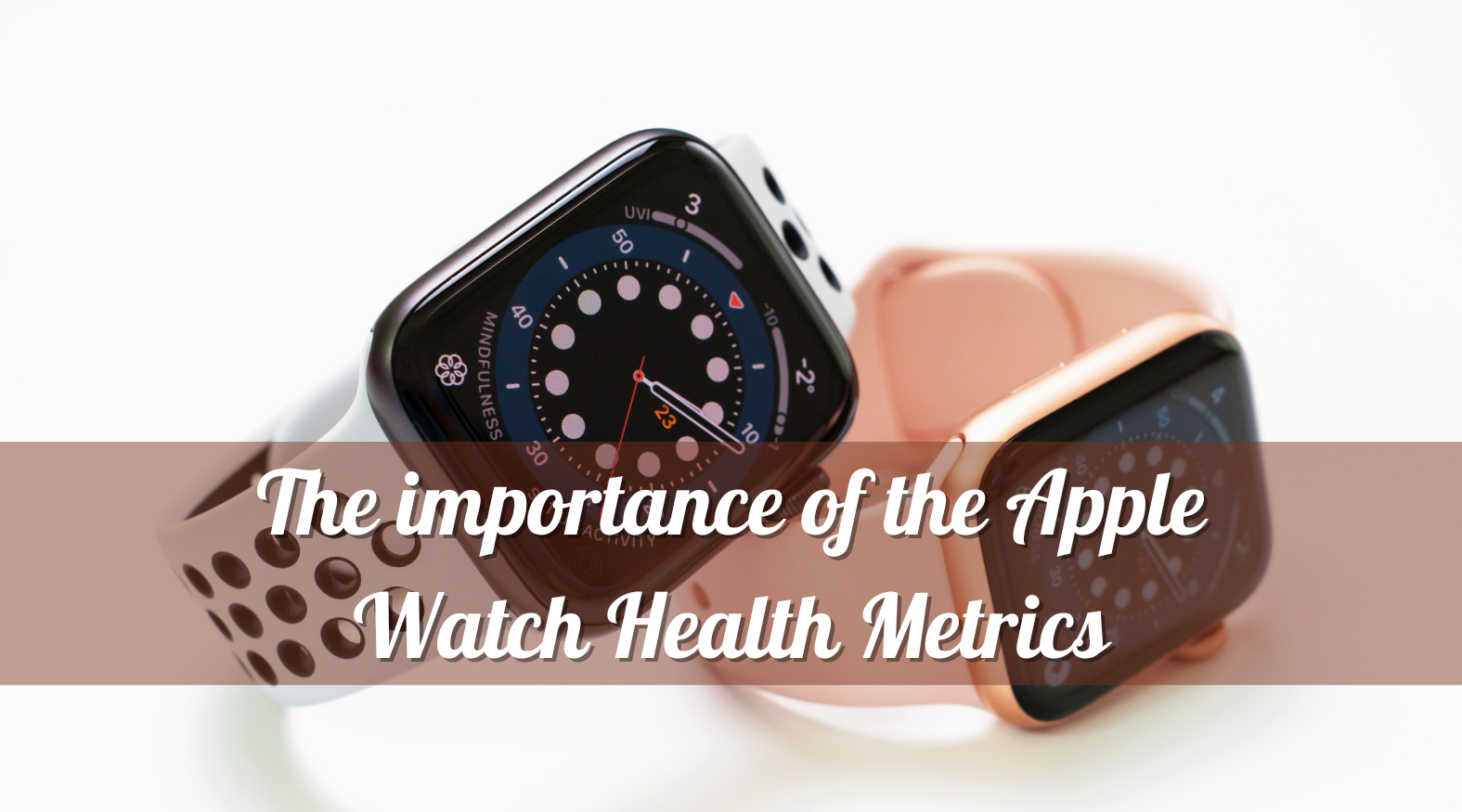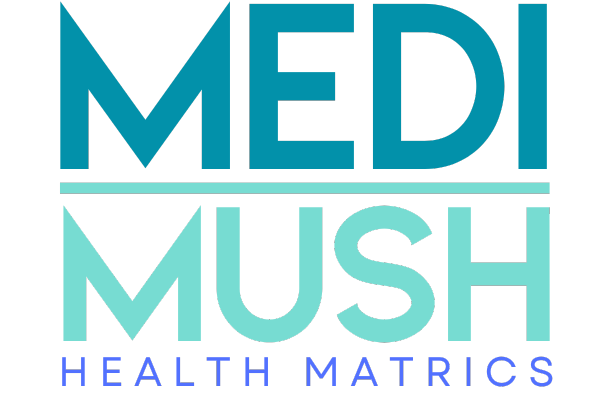
Apple Watch Health Metrics: Changing Lives One Data Point at a Time
In the evolving landscape of wearable technology, the Apple Watch stands out as a game-changer, particularly when it comes to Apple Watch health metrics. Gone are the days when watches were simply used to tell time. With advanced health-tracking capabilities, the Apple Watch is now empowering users to take charge of their well-being, providing real-time insights into health metrics and evaluation that can profoundly impact how people manage their lives.
This blog will dive into the various Apple Watch health metrics, how they work, and the significant changes they're bringing to users' lives.
Understanding Apple Watch Health Metrics
Apple Watch offers a suite of health metrics and evaluation tools that track various aspects of well-being, including:
- Heart Rate Variability (HRV)
- Resting Heart Rate (RHR)
- VO2 Max
- Heart Rate Recovery (HRC)
- Heart Rate Monitoring
- Blood Oxygen Levels
- Electrocardiogram (ECG)
- Sleep Tracking
- Fitness Activity and Workout Tracking
- Mindfulness and Breathing Monitoring
1. Heart Rate Variability (HRV): A Window Into Your Autonomic Nervous System
Heart Rate Variability (HRV) measures the variation in time between consecutive heartbeats. A higher HRV is associated with better fitness, recovery, and stress resilience, making it a crucial health metric and evaluation tool. It reflects how well your autonomic nervous system (which controls functions like digestion and heart rate) is functioning.
Athletes and those who experience high stress levels find HRV particularly useful as it helps optimize recovery and stress management.
Changing Lives: HRV offers insights into mental and physical resilience, making it an essential Apple Watch health metric for improving overall well-being.
2. Resting Heart Rate (RHR): Your Fitness Baseline
Resting Heart Rate (RHR) serves as a baseline for evaluating your cardiovascular health. The Apple Watch tracks this metric when the body is at rest, helping to highlight potential health concerns. Lower RHR is often associated with improved fitness, while higher RHR may indicate stress or overexertion.
This Apple Watch health metric allows users to track their fitness levels and respond to any signs of potential health issues, ensuring that they can make lifestyle changes to enhance well-being.
Changing Lives: RHR tracking through Apple Watch health metrics allows users to monitor cardiovascular health and make informed decisions about their daily habits.
3. VO2 Max: Measuring Cardiovascular Fitness
VO2 Max measures how much oxygen your body can utilize during exercise, an important health metric and evaluation for assessing cardiovascular health. The Apple Watch calculates VO2 Max during workouts, giving users insights into how well their body is performing.
For those looking to enhance their fitness, tracking VO2 Max through Apple Watch health metrics allows for better performance optimization and overall health improvement.
Changing Lives: Monitoring VO2 Max enables users to understand their fitness capacity and create personalized fitness plans to meet their goals.
4. Heart Rate Recovery (HRC): A Measure of Fitness and Recovery
Heart Rate Recovery (HRC) evaluates how quickly your heart returns to normal after exercise. A fast recovery rate indicates better cardiovascular health, making it a key health metric and evaluation tool in assessing fitness.
HRC tracking via Apple Watch health metrics provides users with the information they need to optimize their fitness routines and improve cardiovascular recovery times.
Changing Lives: By understanding HRC, users can optimize their workouts and recovery, ensuring better long-term health and performance.
5. Heart Rate Monitoring: A Lifesaving Tool
One of the most critical Apple Watch health metrics is continuous heart rate monitoring. The watch can alert you to abnormal heart activity, such as irregular heartbeats or excessively high or low heart rates.
Numerous users have credited these alerts for detecting underlying conditions and seeking early treatment. This real-time health metric and evaluation can truly be lifesaving.
Changing Lives: Continuous heart rate monitoring offers individuals with pre-existing conditions peace of mind and helps athletes improve performance and recovery.
6. Blood Oxygen Levels: Insights into Respiratory Health
The blood oxygen sensor is a recent addition to Apple Watch health metrics, providing valuable insights into respiratory and overall health. Tracking this health metric helps users understand how their bodies are performing during sleep, exercise, or even when fighting off illnesses like COVID-19.
Changing Lives: Users with respiratory conditions benefit from blood oxygen level tracking, allowing them to manage their health more effectively and take control of their wellness.
7. ECG: A Pocket-Sized Cardiologist
Apple Watch’s Electrocardiogram (ECG) functionality turns your watch into a mini heart specialist. It’s an easy-to-use tool that measures your heart’s electrical activity, offering an essential health metric and evaluation for detecting irregularities like atrial fibrillation.
This Apple Watch health metric has been instrumental in saving lives by alerting users to potential heart issues early.
Changing Lives: Individuals at risk of atrial fibrillation have found this feature life-changing, giving them the power to monitor their heart health and respond swiftly.
8. Sleep Tracking: Unlocking Better Rest
With Apple Watch health metrics focused on sleep, users can monitor the quality and duration of their rest, helping them understand sleep patterns and make changes for better sleep hygiene. By leveraging this health metric and evaluation, individuals can improve both their physical and mental well-being.
Changing Lives: Better sleep leads to improved mood, energy, and cognitive function. Users report feeling more balanced and productive after analyzing their sleep with Apple Watch.
9. Fitness and Activity Tracking: More Than Just Steps
The Apple Watch doesn’t just count steps—it tracks a full range of fitness metrics, including calories burned, heart rate, and time in heart rate zones. This full-fledged Apple Watch health metrics suite motivates users to stay active and optimize their fitness routines.
Changing Lives: Many users credit Apple Watch for helping them start and maintain healthy, active lifestyles. This health metric and evaluation tool fosters a sense of accountability and supports sustainable habits.
10. Mindfulness and Breathing: Managing Stress
The mindfulness and breathing exercises provided by Apple Watch offer a moment of calm during stressful days. As part of the Apple Watch health metrics, these exercises encourage users to take time to focus on their mental well-being.
These reminders, though small, have been transformative for individuals dealing with anxiety, stress, or burnout, offering a practical tool for emotional regulation.
Changing Lives: Users report improved emotional well-being and reduced stress levels through mindfulness practices guided by Apple Watch, proving that health metrics and evaluation go beyond physical health.
Conclusion: Empowering Individuals with Apple Watch Health Metrics
The Apple Watch is more than just a trendy piece of tech—it’s a revolutionary tool that’s actively changing lives through its comprehensive health metrics and evaluation system. With advanced metrics like HRV, RHR, VO2 Max, and HRC, the Apple Watch offers deeper insights into both physical and mental health, helping users make informed decisions about their well-being.
Whether you’re tracking heart health, sleep quality, or stress levels, these Apple Watch health metrics empower users to take control of their health in ways we never could have imagined. The future of personal health is here—and it’s right on your wrist.
How have Apple Watch health metrics changed your life? Share your experience in the comments below!




 Where Can I Buy B12 Injections in the UK?
Where Can I Buy B12 Injections in the UK?
 Are Naked Noodles Healthy
Are Naked Noodles Healthy






